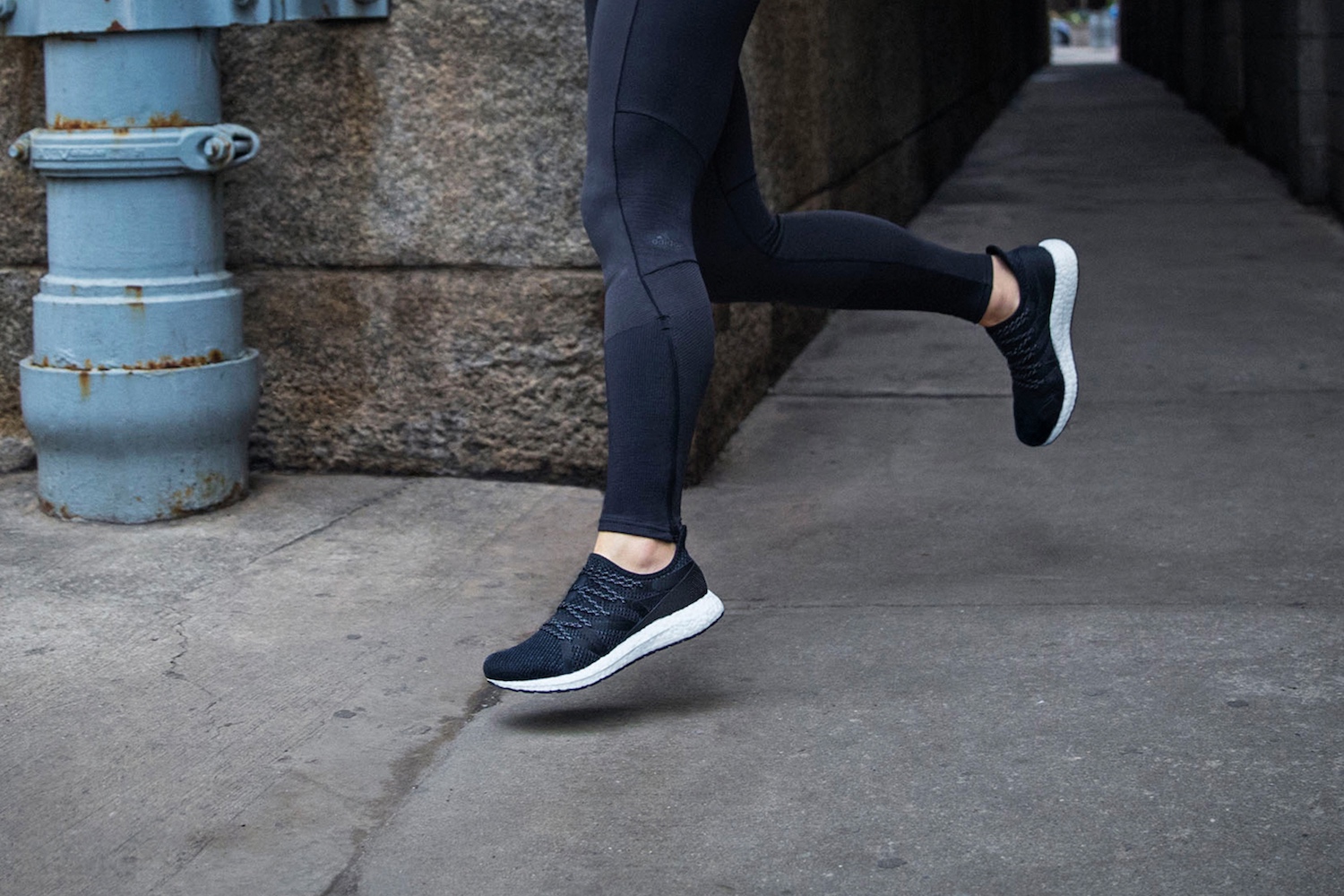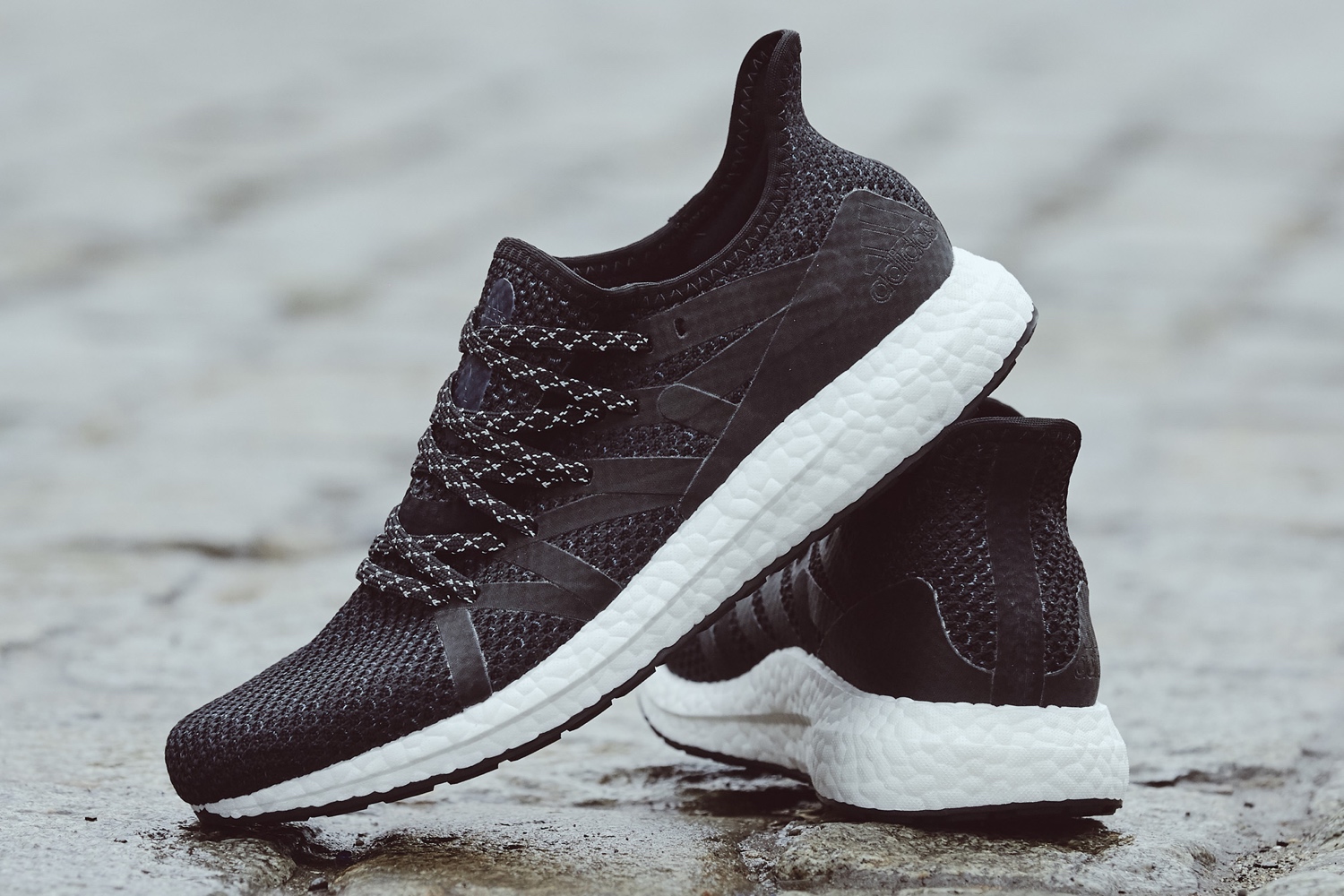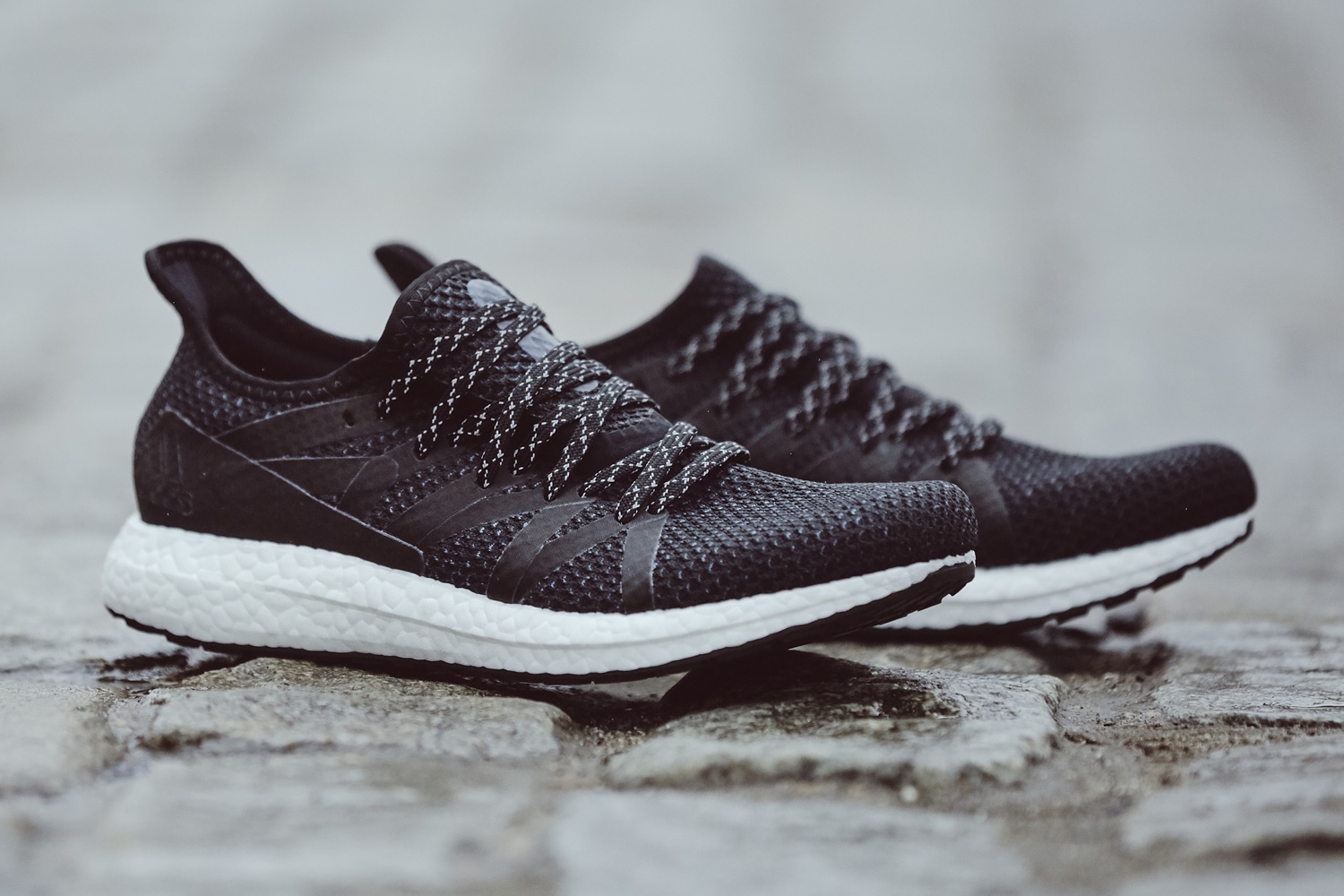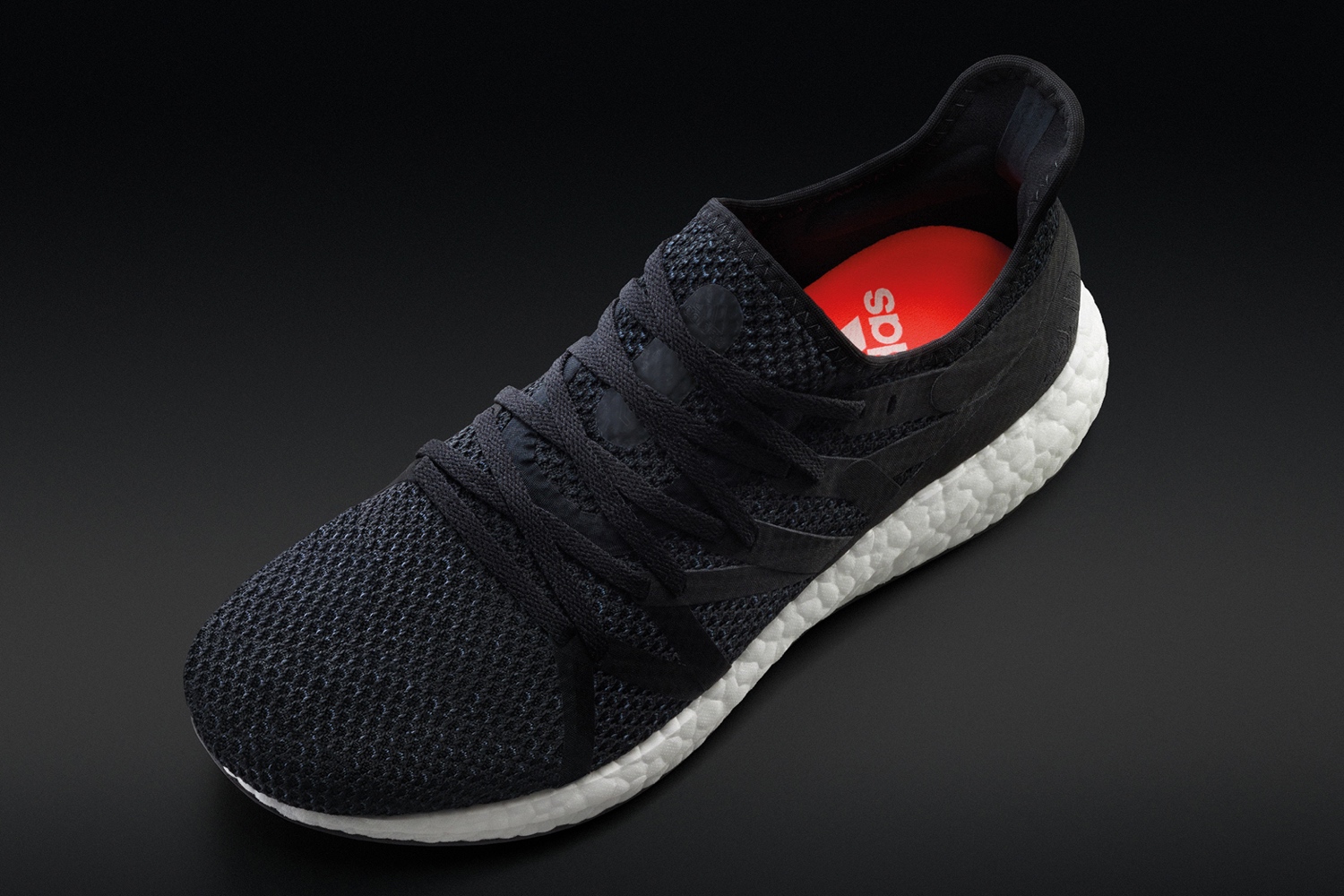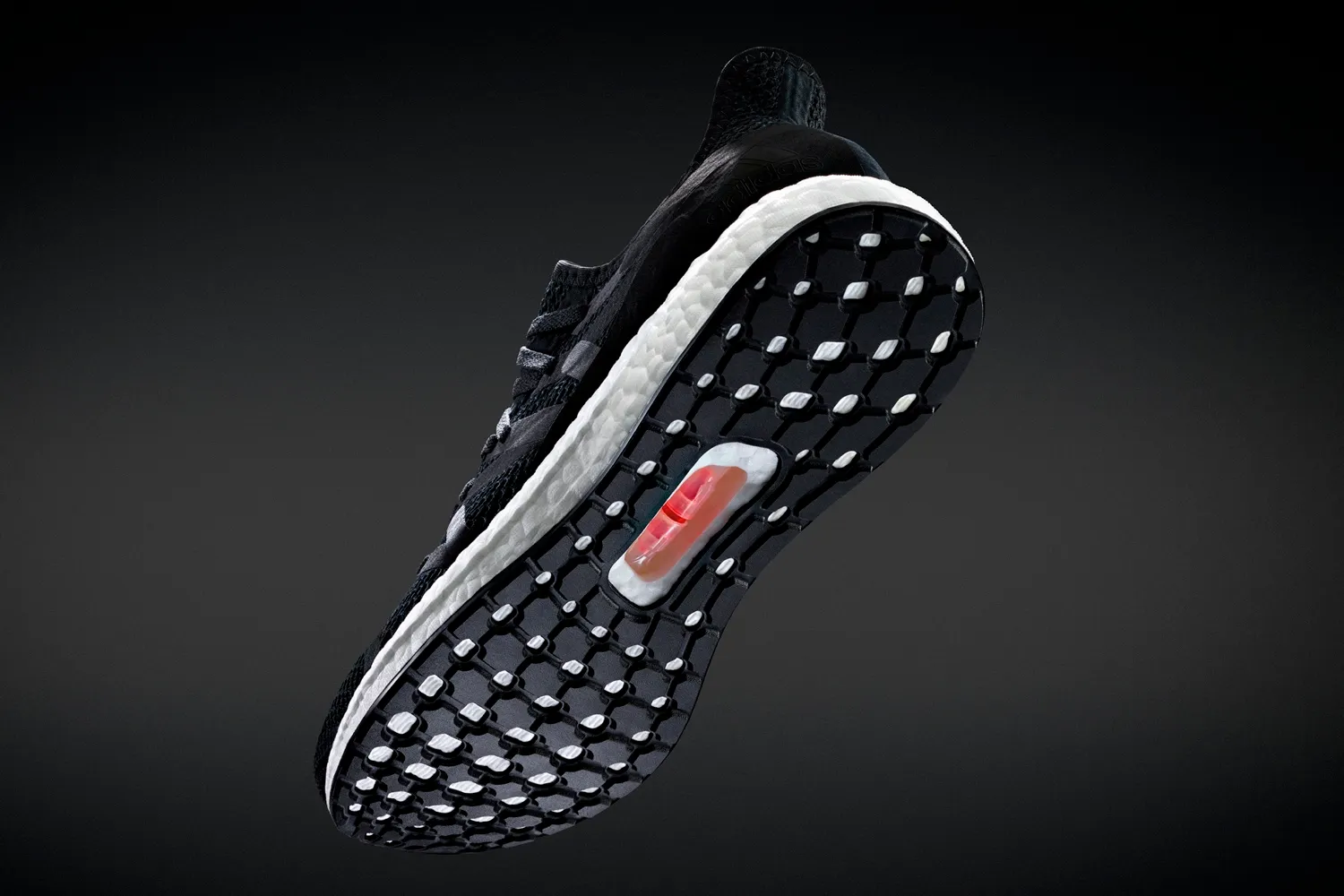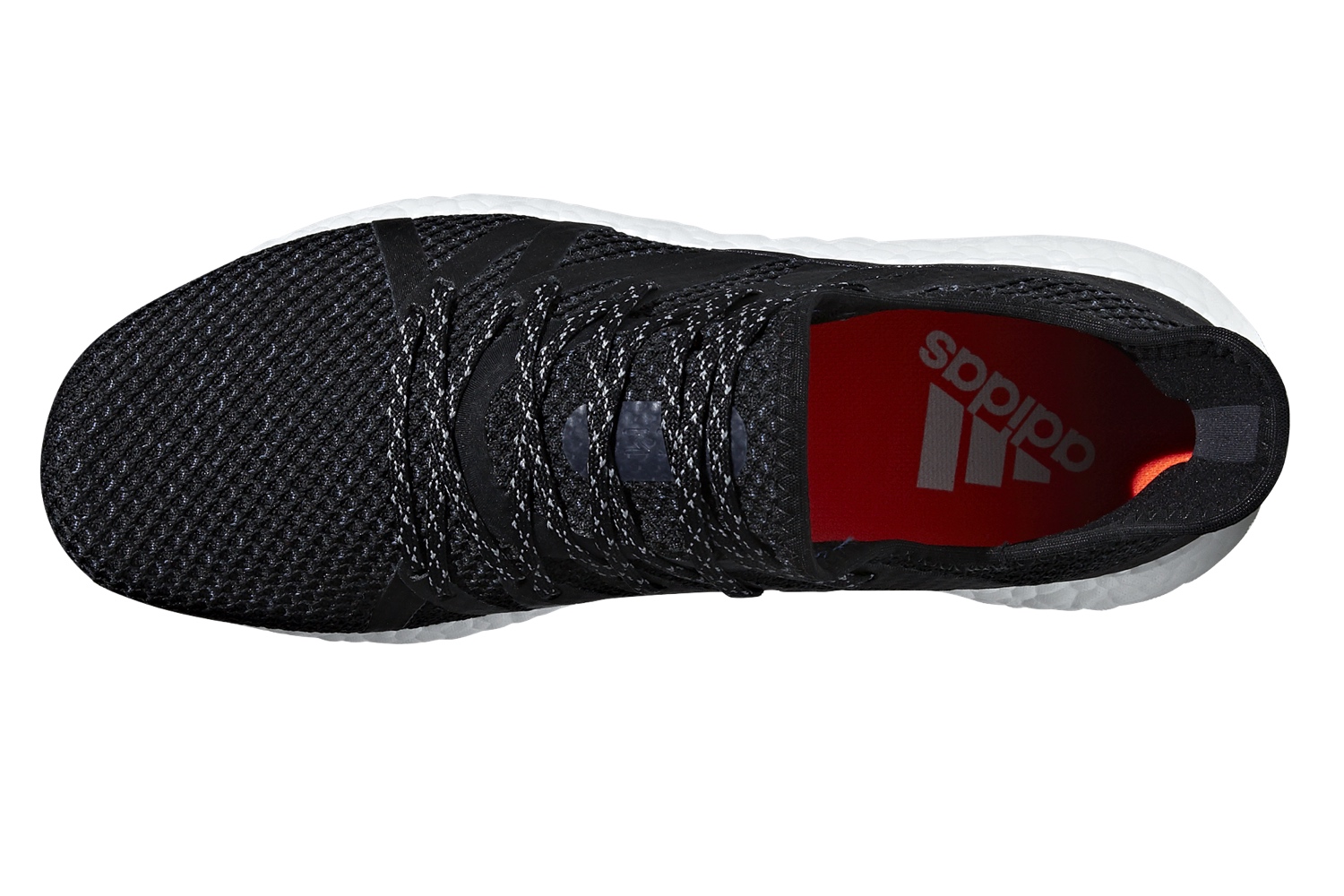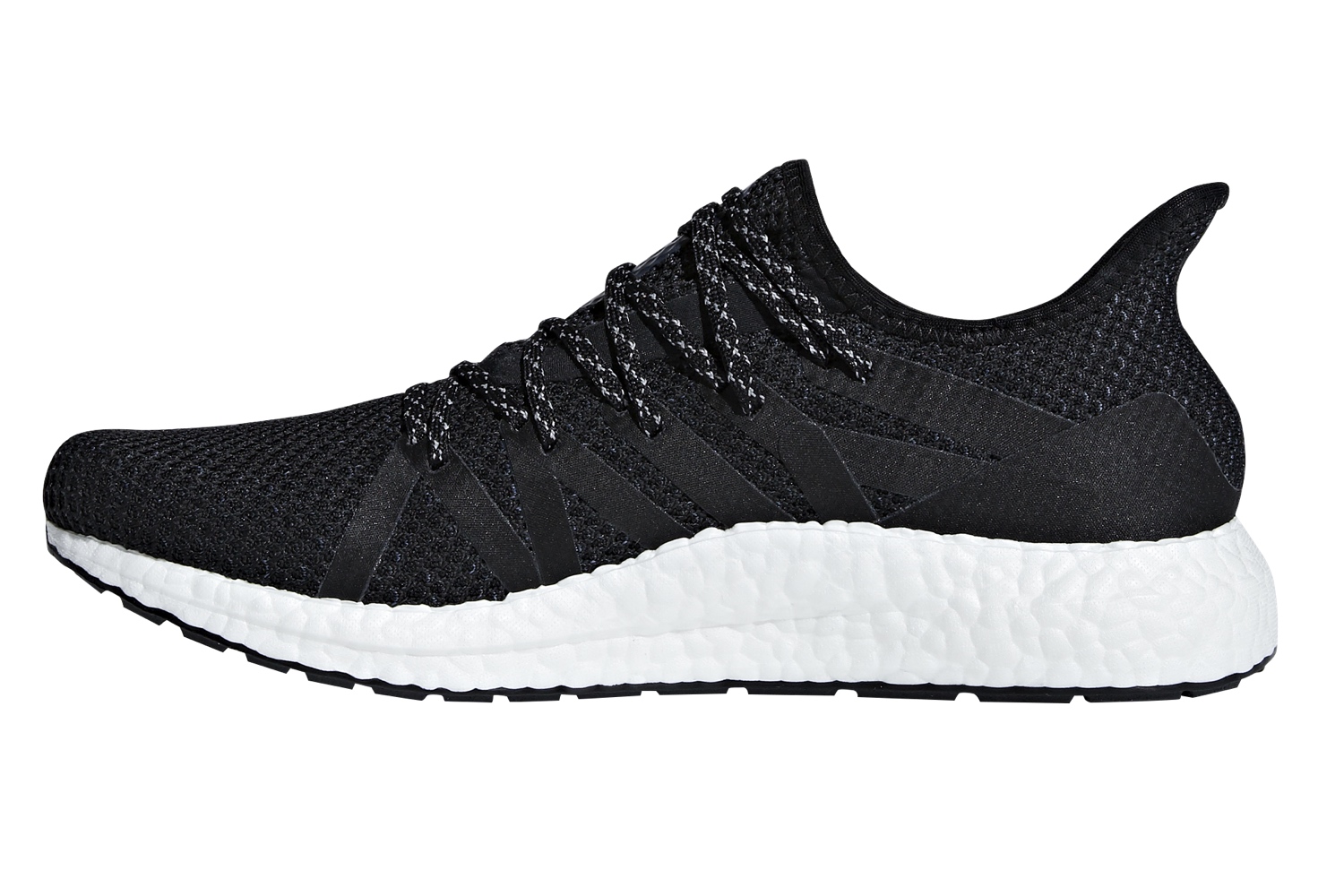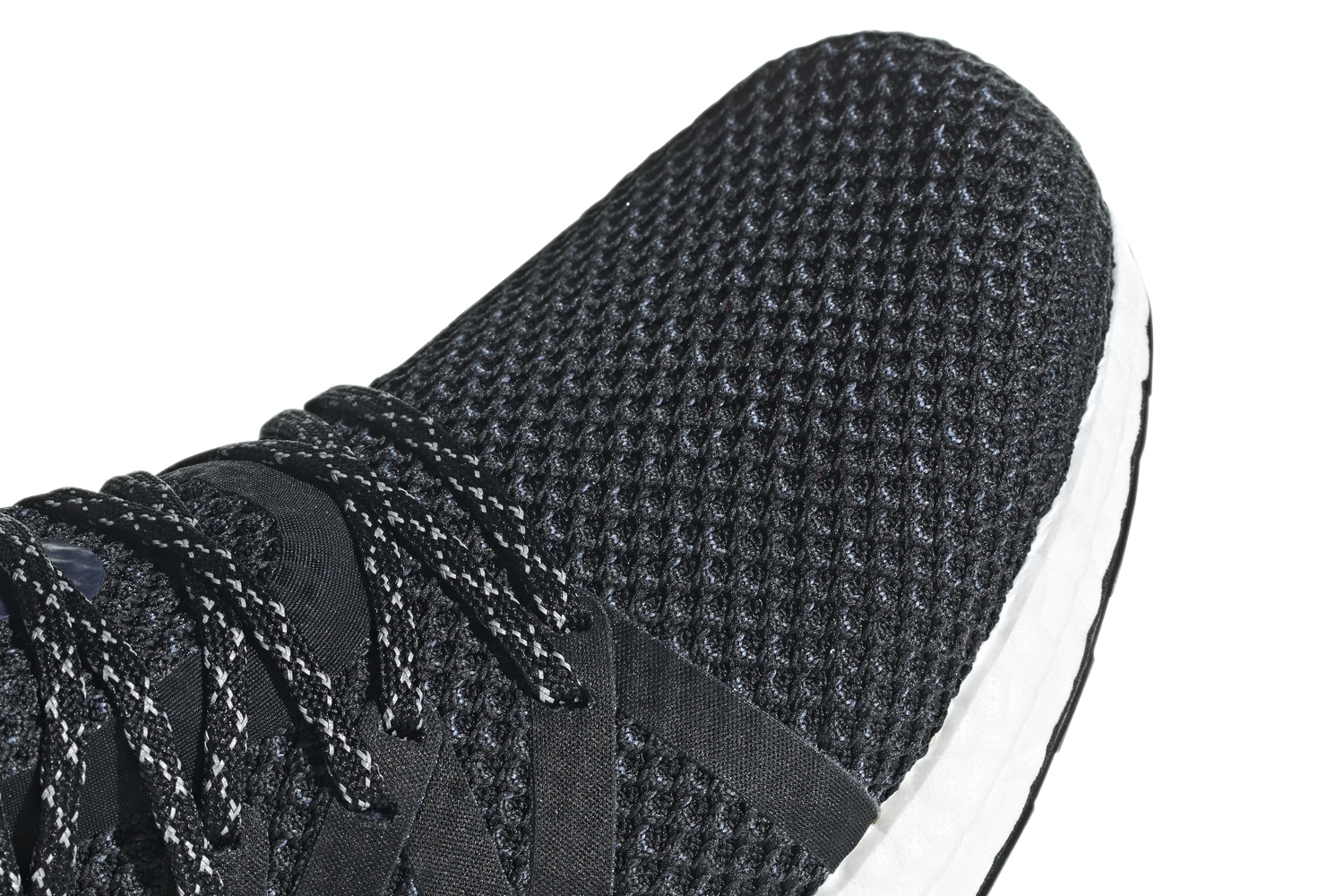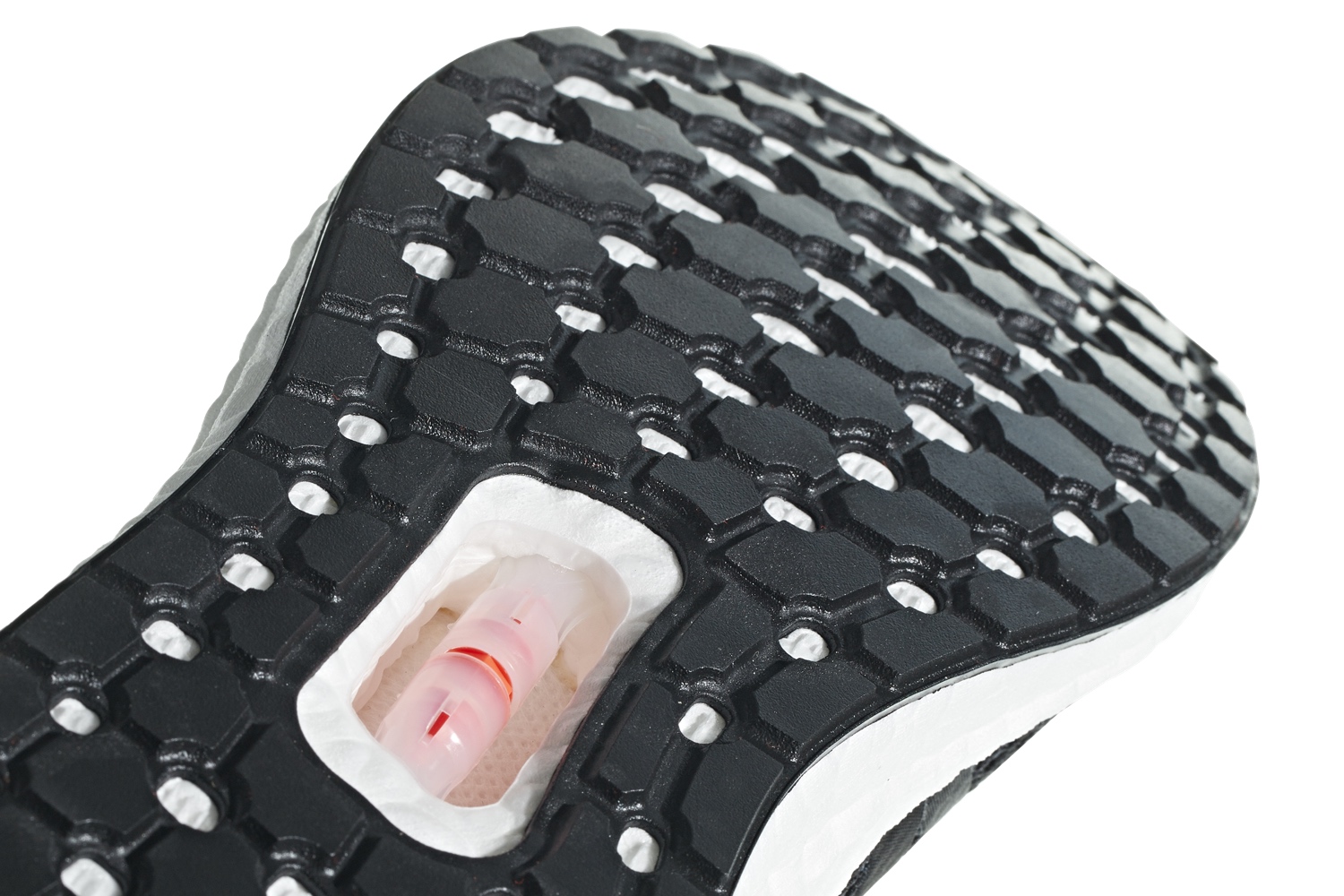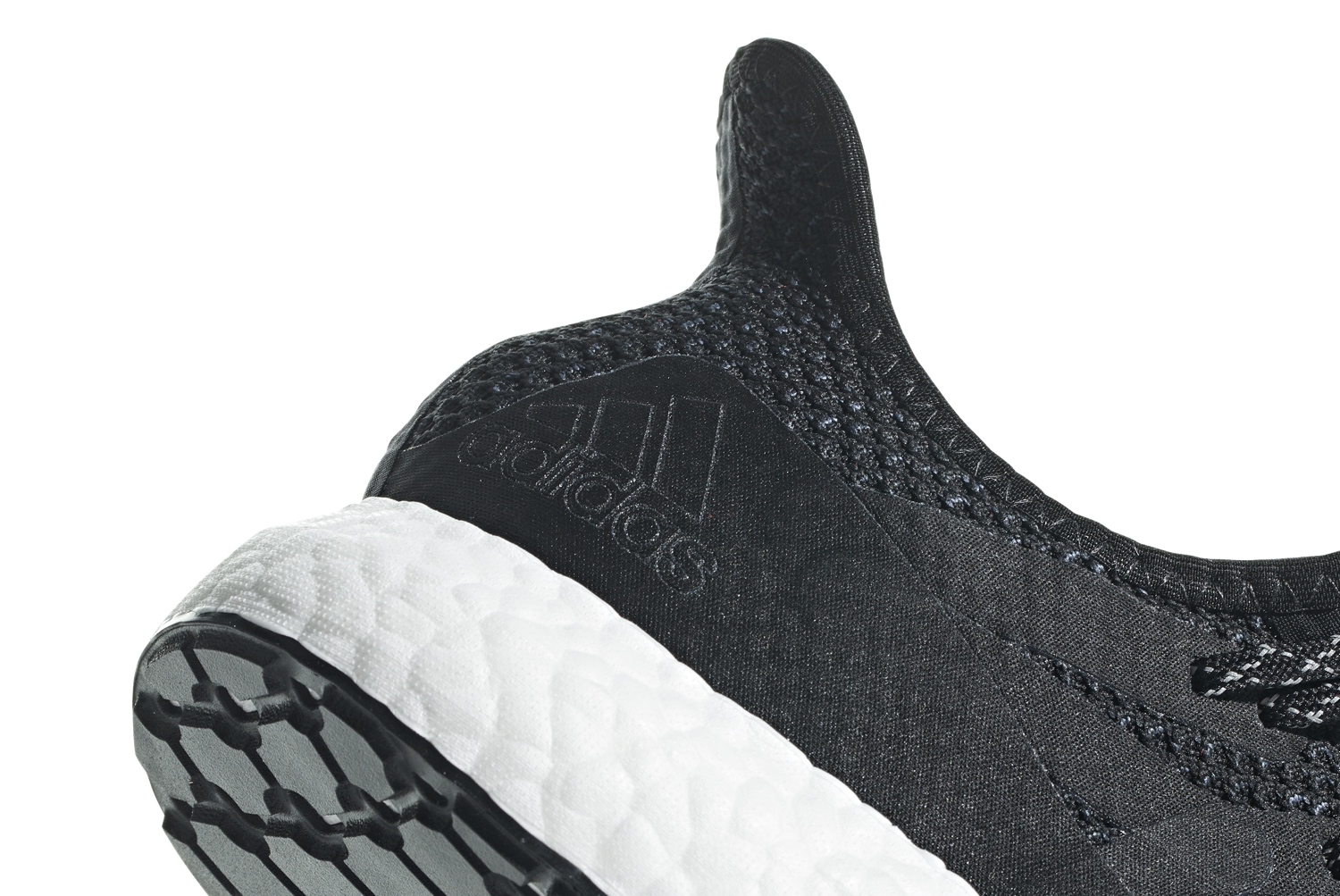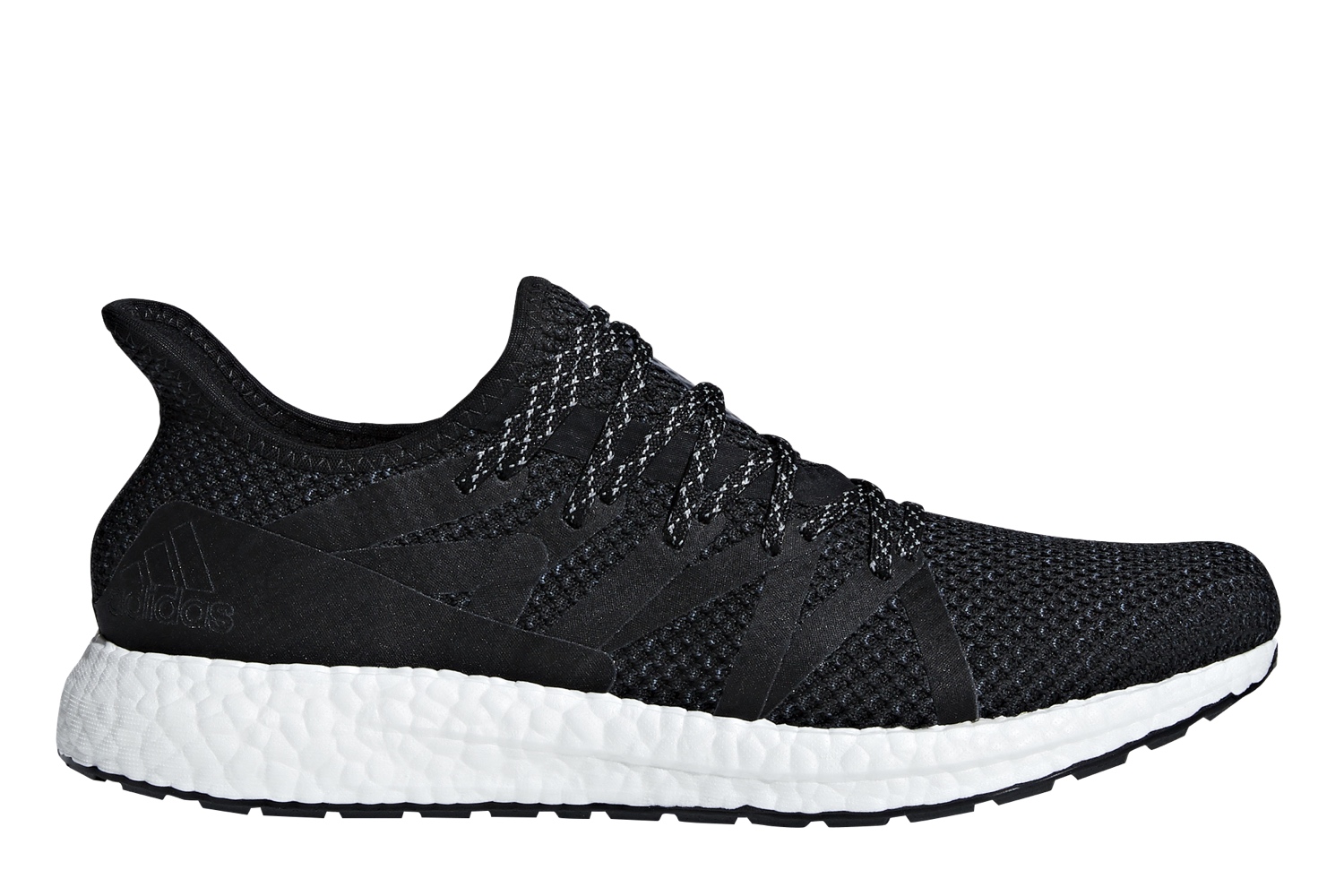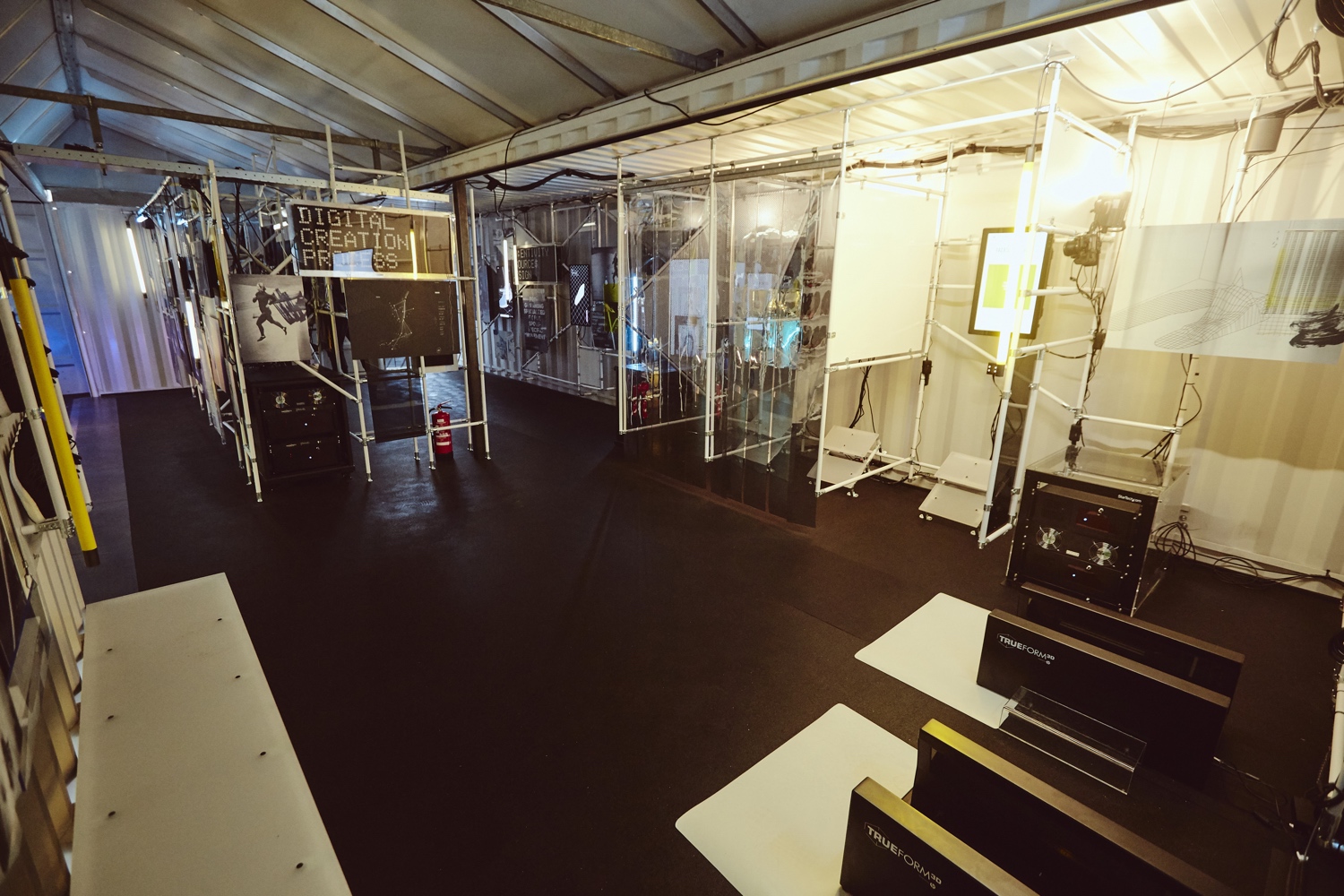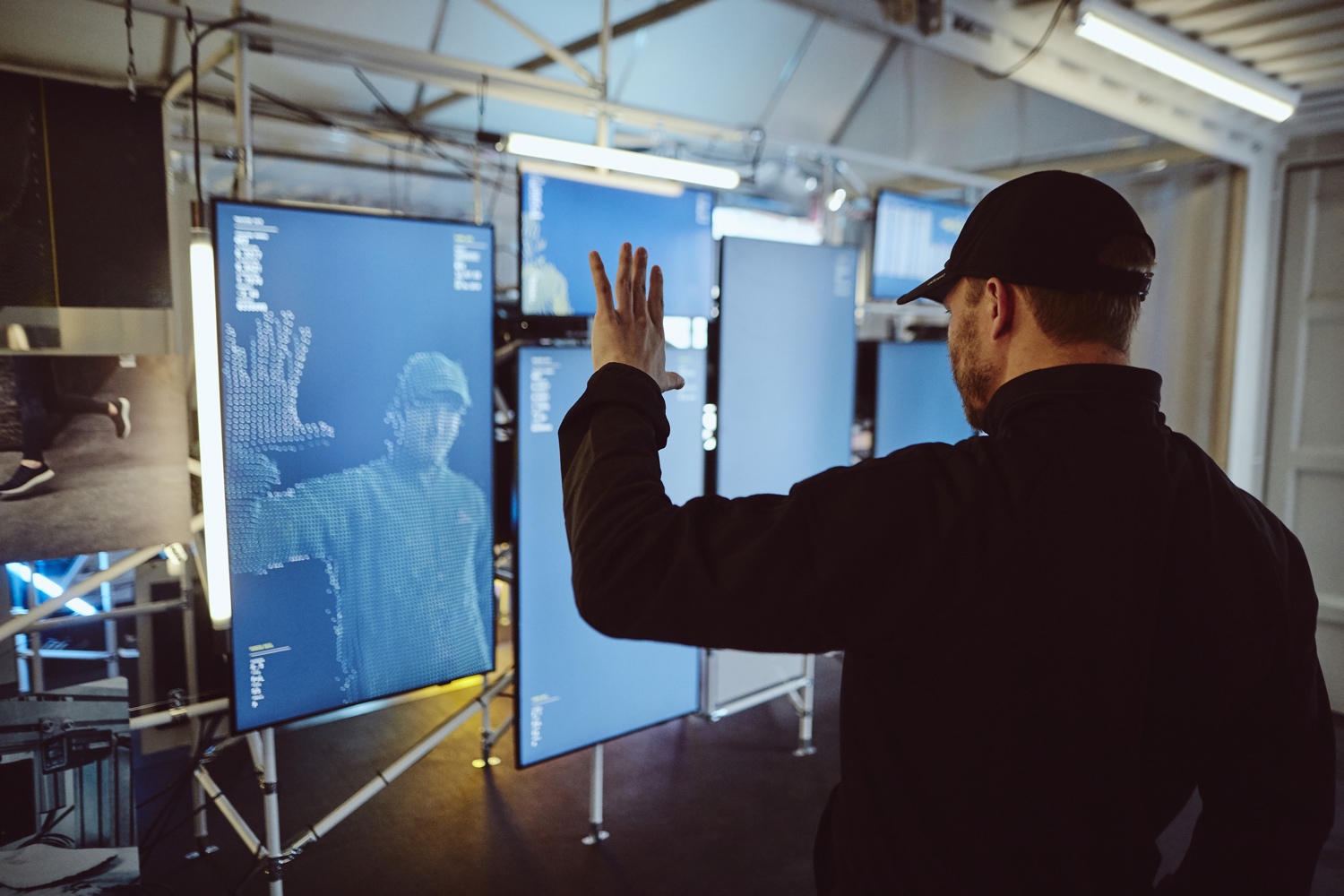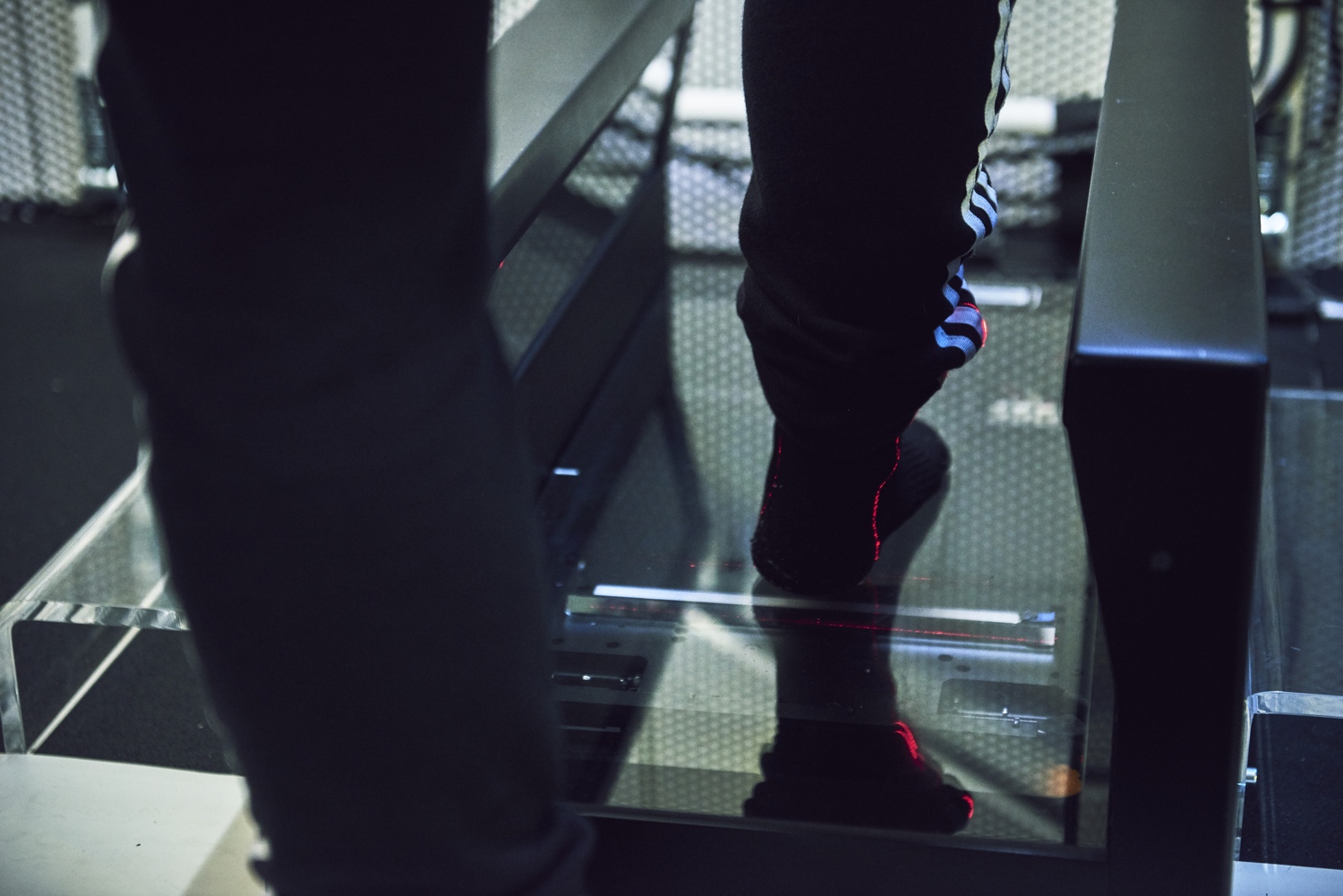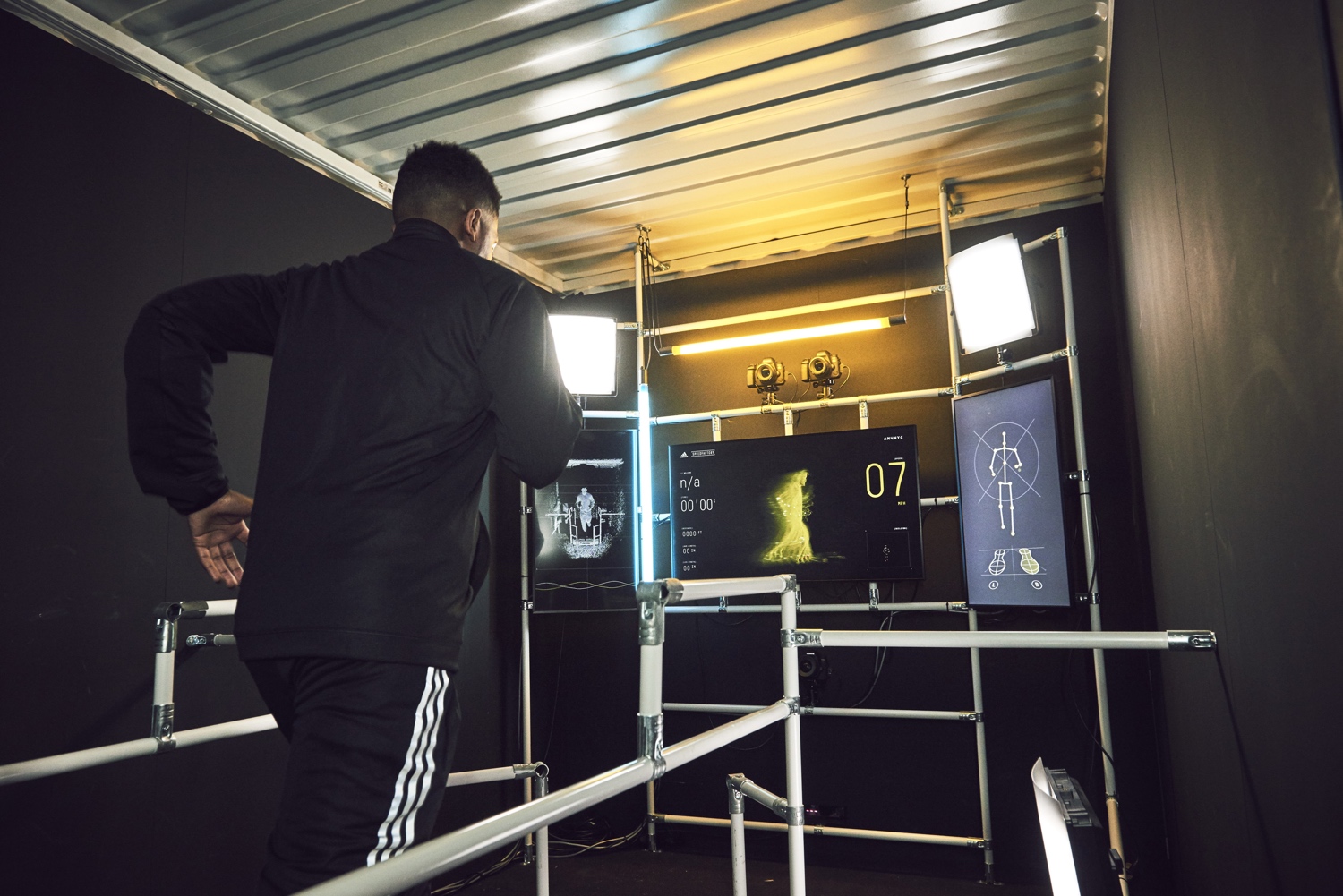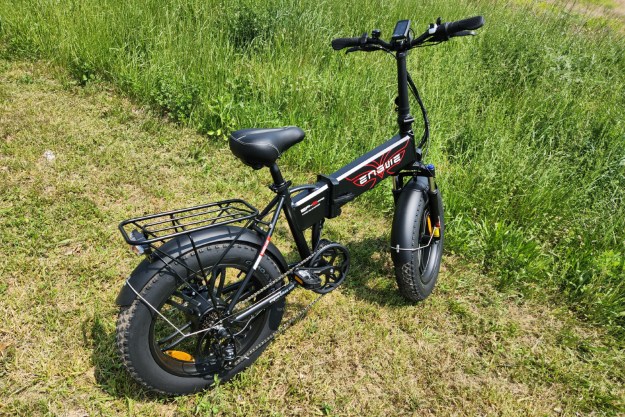There is no such thing as the perfect shoe, but with the AM4-series, Adidas aims to get close to making one. The running shoes are all tech: digitally designed around research data, embedded with cutting-edge components, and assembled by robots — all to achieve the perfect fit. Created in Adidas’ automated Speedfactory manufacturing facilities, the AM4 shoes are anything but one-size-fits-all. In fact, these high-tech kicks are purposely designed to serve niche groups of users wearers. Its new AM4NYC, for example, which goes on sale on April 26, was designed for urban runners in New York City. So in a business where it sells to everyone globally, why would the world’s second largest maker of sportswear invest in factories that make shoes for a select few? Because for Adidas, the AM4NYC and Speedfactory aren’t just about making the perfect shoe, they are proof of concepts of how shoes in the future could be made — tailored for each individual, with precision and on-demand.
Designed by big data, made by robots
All AM4-series shoes are manufactured by robots at Adidas’ Speedfactory centers in Ansbach, Germany and Atlanta, Georgia. Each model is named after a city that it was designed for — in the case of the Atlanta-made AM4NYC, that’s New York City. But it isn’t just a difference in styling: Before design codes are sent to the robots, Adidas spent time researching the needs of runners in each city, taking into considering not only their performance data and body measurements, but also their verbal feedback — their likes, dislikes, and suggestions.
For the AM4NYC, Adidas knew it would be making a shoe for urban running. Adidas, of course, knows how make a running shoe, but what it didn’t know was how people in a New York City ran in those shoes. So, it tapped six local athletes, measuring their foot size with precision flatbed scanners and analyzing their running style and foot-to-ground impact on a treadmill equipped with a DSLR camera. They were also strapped with body sensors — a motion-capture technology Adidas calls ARAMIS, similar to systems used in Hollywood and game development), that precisely measured their performance and created a data visualization of how they ran.
Each athlete was also given a pair of Speedfactory-made shoes to wear. The test shoes were based on the first model Adidas developed, called M.F.G., or Made for Germany, and although it was developed from running research, the athletes helped Adidas fine-tuned it for New York City running. For example, the athletes requested some sort of reflective element that could be seen by drivers in cars when they run at night. After running around Brooklyn, they realized the shoes got dirty very quickly, so an all-black color scheme was chosen. The athletes’ input, combined with the performance data, was incorporating into the design. Fed into the Speedfactory robots, and the AM4NYC was born.
The AM4NYC may look like an ordinary Adidas running shoe with a breathable mesh exterior, but it’s designed for the New York City runner. Zachary Coonrod, the senior designer on Adidas’ Futures team who was behind the development of the AM4NYC and growth of Speedfactory, told Digital Trends that, based on the data, they positioned more cushioning in areas that better supported where the runners’ feet landed. In addition, unlike the other AM4 shoes (AM4LDN for London and AM4PAR for Paris), the NYC version has an extra eyelet for the shoelace, located near the metatarsal bones of the feet. Coonrod said that as runners cinched to tighten, it adds extra protection to the metatarsal bones. And to address the runners’ request, 3M reflectors were added to the shoelaces.
All AM4 shoes feature Adidas’ Boost cushioning that provides more pushback to propel the wearer forward. They have a upper that’s digitally bonded to the sole, not glued. This allows the shoe to twist and flex — bending accordingly with the feet — which isn’t possible in shoes that use glue to “weld” the two parts together, due to the stiffness. Coonrod wouldn’t divulge the digital bonding process Adidas uses, calling it a proprietary technology. Based on what we know about Adidas’ 3D-printed shoes, we suspect it may be using a similar technology. But he said the process isn’t possible with human labor, and could only be achieved by using robotics.

For comparison, Coonrod said the London version was based on a study with a larger cross section that enjoys morning runs along the waterfront. The Paris version focused specifically on female runners, particular those who are first-timer (it’s available only in women’s sizes). Coonrod said the Parisian runners also valued style more. Next up, Speedfactory will be producing shoes for runners in Los Angeles, Shanghai, and Tokyo.
Experience the future of shoes on your feet, now
The AM4NYC launch coincides with the opening of the Speedfactory Lab Experience pop-up in the Brooklyn borough of New York City (April 26 and 27), where Adidas conducted the testing. Despite the name, it’s not a factory or retail store. Rather, it is a mobile showcase, built out of two shipping containers on wheels, that gives visitors a look into Speedfactory and explains how the shoes were developed. Inside, visitors can have their feet digitally measured so they find the most precise fit, and put the shoes to work on a treadmill — the same processes the athletes went through as part of the development.

At $200 a pair, customers may gravitate toward something cheaper instead. But the AM4NYC is different than any plain running shoe, and Adidas is using the Lab Experience as a way to get its story across — to convince you to fork over $200. Looking at the screens with (faked) visualized data, getting your feet scanned, and running in a pair, we couldn’t help but feel like we’re wearing something special — not just shoes, but the future.
The AM4NYC is one of the first Adidas products to demonstrate what the Speedfactory is capable of. It isn’t about robots replacing human labor, Coonrod said. It’s about what shoe manufacturing could become in the future, the ability to have truly custom footwear that goes beyond colors. While the AM4NYC still isn’t everyone, it fits a specific group of runners much more precise than a standard pair that forces the wearer to adapt to it. And as technology advances and more Speedfactory locations come online, Adidas could someday tailor shoes all the way to the individual.
Imagine this: A customer walks into a store to have his feet scanned and his running pattern measured — just like in the Speedfactory Lab Experience. That data is then fed to a nearby Speedfactory that can create a personalized shoe for that individual in very little time. Rather than off the rack, he has a bespoke pair of shoes that’s designed for how he runs — the perfect shoe. And all this data is stores for future purposes
Coonrod said a Speedfactory allows for faster prototypes. And unlike a factory in Asia, particularly one where manufacturing has been outsourced, Adidas can monitor resources and be more conscious of wastes. Coonrod could control the robots in Atlanta from his office in Germany, because all the Speedfactory facilities are carbon copies. And, Coonrod said shoe are just the beginning, as a Speedfactory could churn out other types of products.
How soon will this future arrive? “There’s no timeline” is all Coonrod would say, but Adidas has said that Speedfactory is not a replacement for traditional manufacturing, but a complement. Human jobs might be safe for now, but there’s no doubt that Speedfactory is one template of where manufacturing is heading.
The AM4NYC goes on sale on April 26. It’s available through Adidas’ website, and select retail locations, including Adidas flagship stores in New York. Adidas also unveiled new versions of the AM4LDN and AM4PAR.
